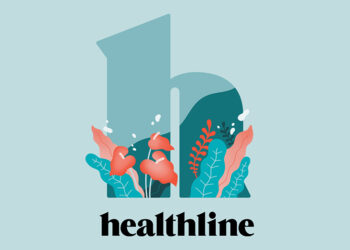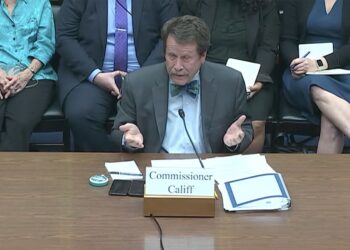TTHealthWatch is a weekly podcast from Texas Tech. In it, Elizabeth Tracey, director of electronic media for Johns Hopkins Medicine in Baltimore, and Rick Lange, MD, president of the Texas Tech University Health Sciences Center in El Paso, look at the top medical stories of the week.
This week’s topics include allocating donor hearts, an online program for long COVID, electronic cigarettes for smoking cessation, and reversing anticoagulation in hemorrhagic strokes.
Program notes:
0:40 Who gets a donor heart?
1:41 Circulatory support system
2:42 Assess new guidelines
3:32 E-cigarettes in helping people stop smoking
4:32 Validated abstinence at 6 months
5:32 Doesn’t stop nicotine use
6:32 Deleterious effects
7:01 Reversing anticoagulation in hemorrhagic stroke
8:01 Almost 10,000 such strokes
9:01 Not as much of a barrier to reversal
9:20 Online program for long COVID
10:20 Health-related quality of life outcome
11:20 Applied generally?
12:20 Related to deconditioning
13:06 End
Transcript:
Elizabeth: An online program for people with long COVID.
Rick: Justice in heart transplantation.
Elizabeth: Can electronic cigarettes actually help people quit using nicotine?
Rick: And improving outcome and strokes due to bleeding.
Elizabeth: That’s what we’re talking about this weekend on TTHealthWatch, your weekly look at the medical headlines from Texas Tech University Health Sciences Center in El Paso. I’m Elizabeth Tracey, a Baltimore-based medical journalist.
Rick: I’m Rick Lange, president of Texas Tech University Health Sciences Center in El Paso, where I’m also dean of the Paul L. Foster School of Medicine.
Elizabeth: Rick, I’d like to toss the ball straight to you. I’d like you to talk about this issue in JAMA about let’s call it equity with regard to heart transplants.
Rick: Heart transplant ends up being the preferred therapy for people with advanced heart failure. That’s because the 1-year survival after heart transplantation is 90%. The conditional half life is 13 years, so we have really made a lot of advances with heart failure. But there aren’t enough hearts to go around, and more than one-third of the candidates that are waiting for a heart transplant either die or they are removed from the waiting list without receiving one.
Now, there is an organization called UNOS, United Network for Organ Sharing, that tries to allocate these limited hearts to make sure that the individuals that are most likely to die receive them. We have six different criteria that are currently used. Unfortunately, you can manipulate those. For example now, one of them is you have to have specific what are called hemodynamic criteria. Let’s say you and I have the same degree of advanced heart failure, and they treat me with medications and they decide to put you on some mechanical circulatory support system. Well, you get to be moved up the list, and I stay right where I’m at. Individuals who would normally be treated with medications because that’s the first recommendation, they were more likely to be put on mechanical support. It went from 9% of individuals to 32%. What this means is that the physicians were gaming the system. They were advocating for their patients, which is what they should do; but unfortunately that doesn’t mean that the patient that’s the sickest gets moved up on the transplant list.
What these authors did is they list the criteria, 46 different variables that are harder to manipulate. If I look at individuals that are going to be transplanted and I use this, does it do a better job of discriminating who is likely to die and should get a transplant and who we can take off the list or move further down the list? And in fact, what they determine is it does. I think this is a call for the medical community to adopt these standards and say, hey, let’s be fair about this.
Elizabeth: Well, clearly the only thing that’s going to prove that this is better is going to be years of data that assess these outcomes after these things are employed. UNOS was trying to do that with many organs, not just hearts, but kidneys, et al., and we still have a lot of controversy about who receives them.
Rick: Again, you want to get the patients that are most likely to need it most urgently. As you mentioned, this particular model they use is already being used for kidney transplant. All we’re saying is that we need to move to it for heart transplant. In fairness to UNOS, since we’ve been transplanting hearts, they have gone through four different iterations of trying to find the right way to classify individuals. I think this is really good information, and I think we can begin to use it already.
Elizabeth: Well, I don’t think there is any question that we need to scrutinize this whole organ allocation system more carefully and try to develop some equity with regard to who gets the organs.
Rick: Yeah.
Elizabeth: Why don’t we turn to the New England Journal of Medicine? This is a study that’s taking a look at the utility of electronic cigarettes in helping people who self-identify as being ready to attempt smoking cessation. And do they really help? This has been an ongoing debate when electronic cigarettes, of course, were first developed. They were touted as devices to help people stop using combustible cigarettes.
This is a study from Sweden. It randomly assigned adults who were smoking at least five tobacco cigarettes per day who wanted to set a quit date. They were either assigned to an intervention group — which received free e-cigarettes and e-liquids, standard-of-care smoking-cessation counseling, and optional, but not free, nicotine replacement therapy — or to the control group, which got the counseling and a voucher which they could use for any purpose including nicotine replacement therapy. Their primary outcome was biochemically-validated continuous abstinence from smoking at 6 months. They also looked at other outcomes, including patient-reported abstinence from tobacco and from any nicotine at 6 months, respiratory symptoms, and serious adverse events.
They had 622 folks in the intervention group and 624 in the control. Sure enough, they validated continuous abstinence from tobacco smoking at almost 29% in their intervention group and just over 16% in the control group. Those who abstained from smoking in the 7 days before the 6-month visit was just shy of 60% in the intervention group and almost 40% in the control group. At first glance, of course, it looks like these e-cigarettes are helpful in helping people to avoid combustible cigarettes.
Rick: There is a caveat. In terms of things that we have available — behavioral therapy and nicotine replacement — e-cigarettes appear to be superior to them in stopping people from smoking. However, it doesn’t stop people from using nicotine. People that were using e-cigarettes stopped smoking, but they didn’t stop using e-cigarettes. We have to be concerned about the long-term risk associated with e-cigarettes.
Elizabeth: Exactly. The editorialist points out that the trial doesn’t assess, and really can’t assess, how long e-cigarette use would last after the provision ends. If you have to go out there and start buying them yourself or whether this marginal efficacy of e-cigarettes over standard care would persist over time. Also, the editorialist points out that trials are needed to compare these e-cigarettes with varenicline [Chantix]. Is it superior?
Rick: I want to give these investigators some credit, because they are planning on following these patients up for 5 years. Are there long-term consequences? Elizabeth, I hope we’re around to report on the 5-year results of this particular study.
Elizabeth: Oh, wow. That’s a little bit daunting. Let me just add one more thing, and that’s that we’ve talked before about respiratory infections and the use of e-cigarettes. There is no question that there are deleterious effects of inhaling this stuff, and that’s something else that’s not identified in this study.
Rick: They actually looked at some of the respiratory symptoms and said, gosh, if you use e-cigarettes do the respiratory symptoms improve? There were a couple who improved, but to a large extent they didn’t get any better. Switching from combustible cigarettes to e-cigarettes didn’t cure a lot of their problems like shortness of breath and cough.
Elizabeth: Right, and I think we’re going to see more long-term stuff about that. Let’s turn to JAMA Neurology. This study is part of this huge stroke meeting that took place, and a lot of data that came out of that. This is looking at, gosh, if somebody is taking anticoagulation, what happens if they have a hemorrhagic stroke?
Rick: When one looks at the types of strokes, bleeding versus what’s called an ischemic stroke, where there is a clot inside the artery that stops the blood flow, the intracranial hemorrhage is the deadliest type of stroke. Part of that is once you’ve had the bleed, it oftentimes continues to enlarge over the next several hours. We know that if you have an ischemic stroke, the earlier we can resolve that blood clot, the less likely you are to have residual symptoms and the more likely you are to do better.
We never really looked at people that have strokes due to anticoagulation bleeding. If we reverse that quickly, can that actually receive a benefit? We know that reversing it does help. Does reversing it early provide any benefit?
We have this national registry called Get With The Guidelines. It’s on stroke. By looking at almost a half a million individuals, they were able to identify almost 10,000 that had an anticoagulation-associated intracranial hemorrhage, about three-fourths of that had the anticoagulation reversed. The median time was about 4 hours. When they looked at the timing, what they discovered is if you had the anticoagulation reversed within the first 60 minutes of when the patient presented, it decreased the mortality and discharge to hospice by 18%. Now unfortunately, there was no functional benefit, just like we try to open an artery early if someone’s having a heart attack. But now we need to draw our attention to reversing anticoagulation as soon as possible if someone has an intracerebral hemorrhage.
Elizabeth: I’d like you to speak to this issue of anticoagulation because, of course, we have these new agents that are out there that are being employed for this purpose. What are the barriers to being able to do that efficaciously in a very short period of time?
Rick: Until recently, we didn’t have ways of reversing these newer anticoagulants. But now we have very specific ways, and so there is not quite as much of a barrier as there used to be. They highlight that the individuals that are more likely in this particular study to have early reversal were those that were white, had a very high blood pressure, and those that had a lower stroke severity. Part of it is just rearranging our thought process and saying, “Hey, if there is a stroke and there’s anticoagulation involved, we need to reverse that as quickly as possible.”
Elizabeth: Finally, let’s turn to the BMJ. This is a look at the clinical effectiveness of an online supervised group physical and mental health rehabilitation program for adults with post-COVID-19 condition is what they call it. This study goes by the acronym REGAIN.
They enrolled 585 adults who were between 26 and 86 years of age. They were all discharged from the National Health Service in the UK at least 3 months previously after COVID-19 and they had ongoing physical and/or mental health sequelae. They were randomized to receive either this REGAIN intervention or usual care.
Their best practice as usual care was a single online session of advice and support with a trained practitioner. The REGAIN intervention was online over 8 weeks. It had weekly, home-based, live, supervised group exercise and psychological support sessions. Their primary outcome was health-related quality of life using the Patient-Reported Outcomes Measurement Information System [PROMIS] preference score at 3 months. They also had secondary outcomes measured at 3, 6, and 12 months. Those included depression, fatigue, sleep disturbance, pain interference, physical function, social roles or activities, and cognitive function, severity of PTSD [post-traumatic stress disorder], general health, and adverse events.
They were able to show that there were improvements at 3 months, and those were driven predominantly by improvements in depression, fatigue, and pain interference. In their intervention group, only 47% of their participants fully adhered to the program, about 40% partially adhered, and some did not receive the intervention. They are cautiously optimistic that this is actually potentially helpful and could be broadened. However, I think there are a few caveats and I’m sure you’re going to step right into that.
Rick: Talk about whether you think this could be applied generally because, obviously, these are motivated individuals; they participated in the study. Despite that, less than half of them completed this online course.
Elizabeth: One of the caveats for me is that when we examine characteristics of the participants, 88% of them had overweight or obesity, a third of them had been admitted to the ICU during their hospital admission, and their baseline health-related quality of life was low. They had a bunch of characteristics at enrollment into this study that, for me, at least begs the question of what’s due to sequelae of COVID-19 infection and what was already pre-existing.
Rick: In fact, the symptoms they listed as being part of the long COVID symptoms were fatigue, shortness of breath, and muscle ache. Those are things that you associated with not just COVID-19, but just I want to say being out of shape or being obese. So they may not be related to COVID-19. They may be related to deconditioning. There wasn’t improvement. From that standpoint, would you recommend this course?
Elizabeth: I kind of take a look at this as like chicken soup. Like why not? It seemed to have a very low likelihood of causing harm, and if it actually does improve things for people it is a fairly low intervention kind of a strategy.
Rick: Yep. I agree there is not really any harm associated with it.
Elizabeth: More to come on this topic, no doubt. On that note, that’s a look at this week’s medical headlines from Texas Tech. I’m Elizabeth Tracey.
Rick: I’m Rick Lange. Y’all listen up and make healthy choices.
Source link : https://www.medpagetoday.com/podcasts/healthwatch/108787
Author :
Publish date : 2024-02-17 14:00:00
Copyright for syndicated content belongs to the linked Source.








